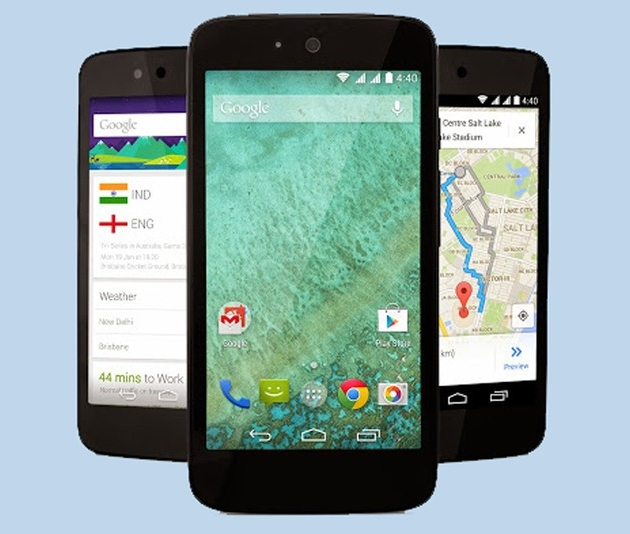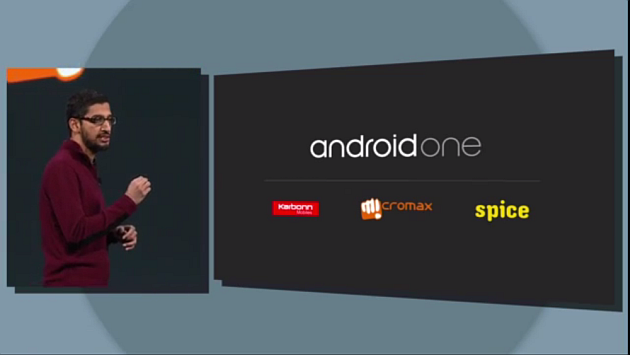AndroidOne – Google's Plan To Bring Smart Phones to Developing Markets
Google is leading the push to get a smart phone into as many eager hands in the developing market as humanly possible. First stop: India.
Google is working with three manufacturers of handsets locally Micromax, Spice and Karbonn to bring three new handsets to the Indian market that will retail for less than $100 or 6,100 Indian rupiahs. The models are the Spice Android One Dream UNO Mi-498, the Karbonn Sparkle V and the Micromax Canvas A1. Google is also working with other hardware partners like Lenovo, Asus, HTC and processor maker Qualcomm to also offer solutions below the $100 target pricing.
The first three smart phones have similar specifications to each other. A 4.5-inch FWVGA display sporting a fair 854x480-pixel resolution, a quad-core 1.3GHz MediaTek processor which should pack a decent kick to it and a dual SIM card option to connect to two cellular networks in case one has poor reception. The handsets also include 1GB RAM and 4GB of onboard storage with a microSD card slot to add more storage if needed. A rear-facing 5-megapixel camera and a removable 1,700mAh battery is included as well.
Each phone model is not unlike the Samsung Galaxy Star Pro which sells for $76 in India and is the leading phone. Only 10 percent of the Indian population currently owns a smart phone. It is interesting to note that the majority of those buying customers owns a very modest phone by international standards.
The second most popular Samsung smart phone is their Samsung Galaxy S2 at $130. The major difference with the Samsung devices is that they run the Samsung TouchWiz overlay which requires a fair bit of horsepower to operate smoothly and usually benefits from screen sizes larger than 4-inches.
Stock Android
All the AndroidOne smartphones will only run the stock version of Android. That is to same Android as other phones have installed, but without any hardware manufacturer skins or extras. This will actually help the phones run the operating system faster because skins like TouchWiz tend to be quite laggy on smaller and underpowered systems in the same way that Windows 8.1 won't run well on 3 year old PC technology. It will also ensure that all phones under the AndroidOne initiative with operate in a similar manner to each other rather than each manufacturer's phone being different; a move to help adoption rates.
Indian Update Problem
Smart phone owners in India avoid updating their phone software and apps to the latest versions because they often lack fiber optic internet connections at home and the bandwidth on 3G and 4G LTE is expensive. Businesses often do not have their own internet connections either which employees could piggyback off to update their software when needed.
Users find that they lose about 50 percent of their monthly bandwidth allocation on updates and in frustration they disable all updates on their smart phones. To partly address this issue and help with adoption rates, AndroidOne is teaming up with leading wireless provider Bharti Airtel that has the biggest segment of the cellular market currently. The carrier will be offering Indian users free Android updates for the first six months of AndroidOne ownership and a 200MB allowance to download apps as well. Both of these will not count against their monthly download allowance on wireless plans with Bharti Airtel.
Smart Phone Story Different Across Developing Markets
Google is putting a lot of faith in their AndroidOne initiative because smart phone adoption has been a hit and miss affair so far. In countries in the developed world the level of market penetration is very high, but in developing countries in Africa, Latin and South America and in South-east Asia, the story is quite different.
Whilst for Thailand phone adoption is higher than neighboring countries, Myanmar only just started to offer SIM cards for under $150 each. Elsewhere in countries like Laos, there are as many copied smart phones for sales at one fifth of the price of real Samsung and Apple iPhones as there are originals for sale.
The story elsewhere in developing markets is quite similar but India is such a large potential market that it is perhaps the best place to start where a significant change in the behavior of the population can lead to a noticeable improvement in access to the internet for people on lower incomes.
5 Billion Users To Go
Emarketer believes that there will be 1.75 billion people owning at least one smart phone by the end of 2014. Of the current market, Google have an 80 percent share with their Google Android platform leaving Apple trailing with only a 17 percent share.
Given that the iPhones are several times more expensive than budget Android phones in the developing market – especially with the AndroidOne initiative – Google hopes to take the next 1 billion smart phone adoptions for themselves with AndroidOne being their big initiative to help with the push up the mountainside to achieving it. At the I/O conference, Sundar Pichai senior Vice President of Android who leads the AndroidOne project raised the stakes further by saying that they wanted the next five billion. Clearly Google is aiming high.
Competition
Google is not alone in its desire to capture a large piece of the remaining smart phone market. Other even cheaper smart phones like the Intex Cloud FX and Spice Fire One Mi-FX 1 offer a $25 option using Firefox OS.


